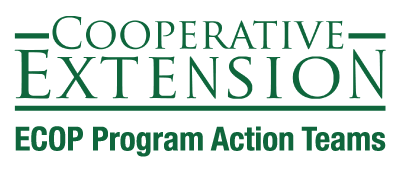Program Action Teams
Broadband Access and Digital Skills
Background
Reliable high-speed internet service has become an integral piece of America’s infrastructure. Yet too many people in both rural and urban parts of the nation still do not have access to dependable, affordable service. This limited access to broadband and proficiency in related essential digital skills is impacting economic opportunities, healthcare access, and education outcomes fora significant number of individuals, families, small businesses, and communities throughout the country.
Closing the Digital Opportunity Gap
It is hard to overstate the challenges of living today without the internet, particularly with our experience during the COVID-19 pandemic. As we shifted our daily lives to an on-line environment to meet social distancing requirements, millions transitioned to teleworking, online student learning, virtual healthcare visits, and a myriad of other virtual interactions shaping our daily lives. During that shift, imagine losing access to essential services such as visiting a government office to file for social security, unemployment, or renewing a driver’s license; visiting a doctor, giving your children access to a quality education; or having the ability to safely shop for groceries, prescriptions, or other essential needs. Without access to broadband, these everyday tasks became insurmountable challenges. Furthermore, many families were not able to maintain their income when teleworking was not an option. Residents without good internet service are at a severe economic disadvantage. While some of these activities have switched back to an in-person model, much of this shift appears to be permanent. Those without reliable, affordable broadband access and the skills and resources needed to use it safely will suffer further economic and social inequity. Closing the digital opportunity gap requires not only affordable internet access, but also the awareness, education, and training to use it safely and effectively.
How is the Cooperative Extension System responding?
The Cooperative Extension System (CES) provides trusted, practical education, to help people, businesses, and communities solve problems, develop skills, and build a better future. Statewide faculty members are disciplinary specialists whose primary responsibility is to develop curricula that translates science-based research results into language (written, verbal, and electronic) appropriate for targeted audiences. County-based Extension professionals work with local community members to solve problems, evaluate the effectiveness of learning tools, and collect grassroots input to prioritize future research. By living and working in communities, they respond to local needs, build trust, and engage effectively with residents through non-formal outreach education and engagement.
CES is working hard to address the digital opportunity gap. Long before COVID-19 became a threat to the ability of millions to keep up with work, education, and health care, Extension professionals recognized the importance of the digital divide and took action to address digital equity. These actions included education programs that raise awareness about the benefits of broadband, convening stakeholders to assist with strategic planning, assessing digital inclusion, feasibility studies, stakeholder input, and technical assistance with writing grant proposals. CES also provided training for community members and businesses about how to safely and effectively use online tools to improve their economic opportunities, access resources, and improve their quality of life.
Many of these programs have been effectively implemented in collaboration with community partners. A few examples include: National 4-H Council 4-H Tech Changemakers, North Carolina State University Cooperative Extension Service resources and training in broadband access, adoption, and utilization, Purdue University Digital Ready Business, Oklahoma State University Extension and local library partnerships to provide hotspots, Nebraska Broadband Initiative, Washington State University Extension Broadband Action Teams, Utah State University Rural Online Initiative, Mississippi State University Bricks-to-Clicks, and the University of Wisconsin Extension Community Development Institute. CES is also partnering with the Land O’Lakes American Connection Project and the Schools, Health, and Libraries Broadband Coalition on these efforts.
What difference is Cooperative Extension making?
By helping residents, businesses, and communities adopt broadband tools, CES is actively supporting resilience and productivity for rural and urban communities throughout the United States.. Multiple studies demonstrate the potential impact of broadband on economic vitality, including a recent study by the FCC linking broadband access with increased farm productivity. Small businesses benefit from building an online presence and a recent study demonstrated the valuable role of Extension educators in digital literacy programming to assist small businesses take advantage of those benefits. Another study has shown the importance of Extension in influencing household internet adoption.
What can be done with additional resources and partnerships?
Increased fiscal resources are needed to update and expand existing curricula, train additional staff to build capacity for broadband and digital equity work, and to further evaluate programs in place. Additional CES staff could also assist local communities in planning to help identify and grow opportunities for broadband access and adoption. This includes convening relevant partners to ensure that federal funding is leveraging other efforts and coordinating with important partners such as state broadband offices and agricultural stakeholders such as the Farm Bureau.
Contact Information
PAT Leader:
Kristopher Elliot
John Green
USDA-NIFA Liaison:
Sarah Rocker
Free to join. Connect Extension account required to access subgroup content. Click the “Join Now” button on the Subgroup’s page or “Join” on the Connect Extension navigation bar.




